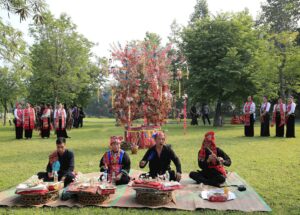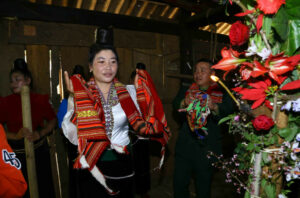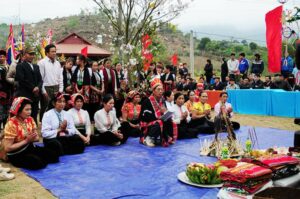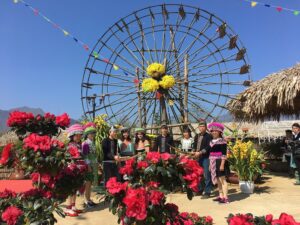The Long Tong Festival Of The Tay People in Kien Thanh, Yen Bai
The Long Tong Festival of the Tay people in Kien Thanh, Yen Bai (also known as the “Rice Planting Festival”) is one of the largest and most vibrant traditional festivals of the Tay ethnic group, held at the beginning of the Lunar New Year. The festival takes place on the 15th day of the first lunar month every year with the desire to express the villagers’ hopes for favorable weather, abundant crops, and prosperity for all families.

About the Long Tong Festival of the Tay People in Kien Thanh
When mentioning Yen Bai, people often talk about the Muong Lo Xoe Festival, the Dai Cai Temple Festival, and so on. However, the Long Tong Festival of the Tay people in Kien Thanh is also extremely famous among tourists. This festival is also commonly referred to as the “Rice Planting Festival.” It is a cultural event for the Tay ethnic people and represents the most characteristic cultural traits of other ethnic groups such as the Nung, Dao, and San Chi. The Tay people view it as a religious activity where they pray to the heavens for favorable weather, flourishing trees, bountiful harvests, and a prosperous life.
The festival is typically held in the largest and most fertile rice fields in the region. However, there is still no documented research that confirms the exact origin of the festival. It is certain, however, that the festival originated in the Tay community when they began living together in villages.
Time and Location
The festival is always held on the 15th day of the first lunar month each year. The Long Tong Festival of the Tay people in Kien Thanh is held right in the Kien Thanh area, where they often choose the largest and best rice fields for the ceremony.
The Rituals of the Long Tong Festival of the Tay People in Kien Thanh
The festival includes solemn traditional rituals. The opening of the festival begins with a procession of fruits and cakes. After this, there is a ceremony to worship the village’s guardian deity and various spirits, including the mountain and river gods: Khau Raao Mountain in the West, Khau Thu Mountain in the North, Khau Cuom Mountain in the South, and the Ba Chua Temple in the East. The Tay people pray for favorable weather, flourishing crops, and protection from pests, hoping for a healthy and prosperous life for the villagers.
According to tradition, during the worship of the guardian deity of Roong Raao Village, the locals offer 6 sets of cakes, each consisting of 6 types of cakes: banh bia, bánh te, banh uoi, banh tra lam, banh phong tru, and banh no. They also present a 12-tiered flower tree to symbolize the 12 months of the year and the harvest season. The trunk of the flower tree is made from a thorny tree, while the flowers are made from mulberry trees. Circular flower wreaths are attached to the branches, with a starfruit hanging from each branch to symbolize plump, abundant rice grains. Each set of cakes is accompanied by 7 platters of food, including chicken, pork, and sticky rice. The ceremony is accompanied by sacred flags, gongs, and drums, creating a lively and festive atmosphere.
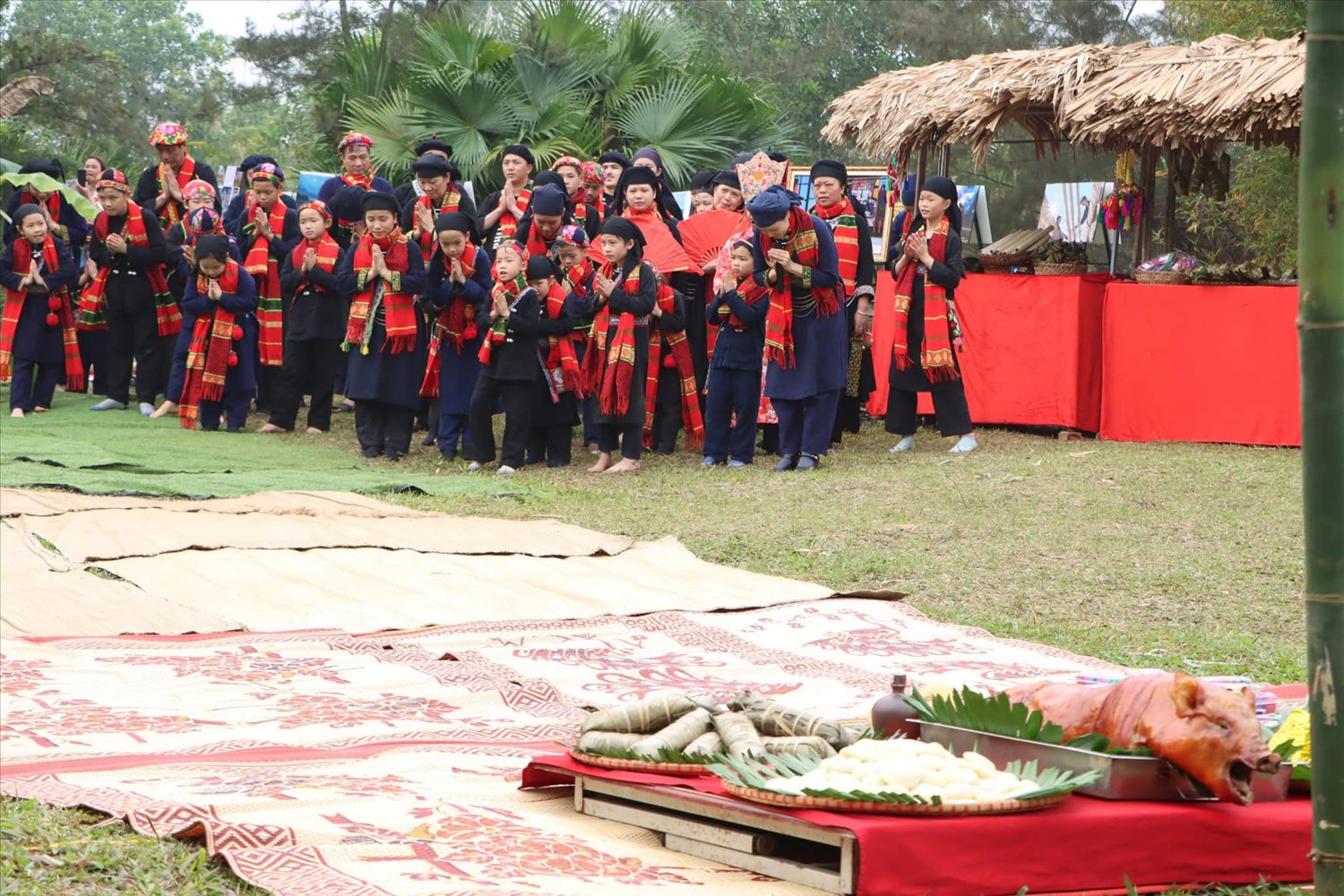
An important part of the ceremony is the worship at the Ba Chua Temple. According to legend, Princess Quynh Hoa visited Roong Raao Village and saw the villagers’ difficult lives, where they had no bowls to eat from and used leaves to hold their food. Moved by their hardship, she returned to the royal court to seek help for them. Unfortunately, while traveling, she was swept away by the flood at Rao Ha Waterfall. In her honor, the villagers built a temple at the waterfall’s edge, named the Ba Chua Temple. Every year, on the 25th day of the lunar December, the villagers prepare offerings to thank her for her protection. All rituals reflect the villagers’ respect and gratitude toward nature and the ancestors who helped them.
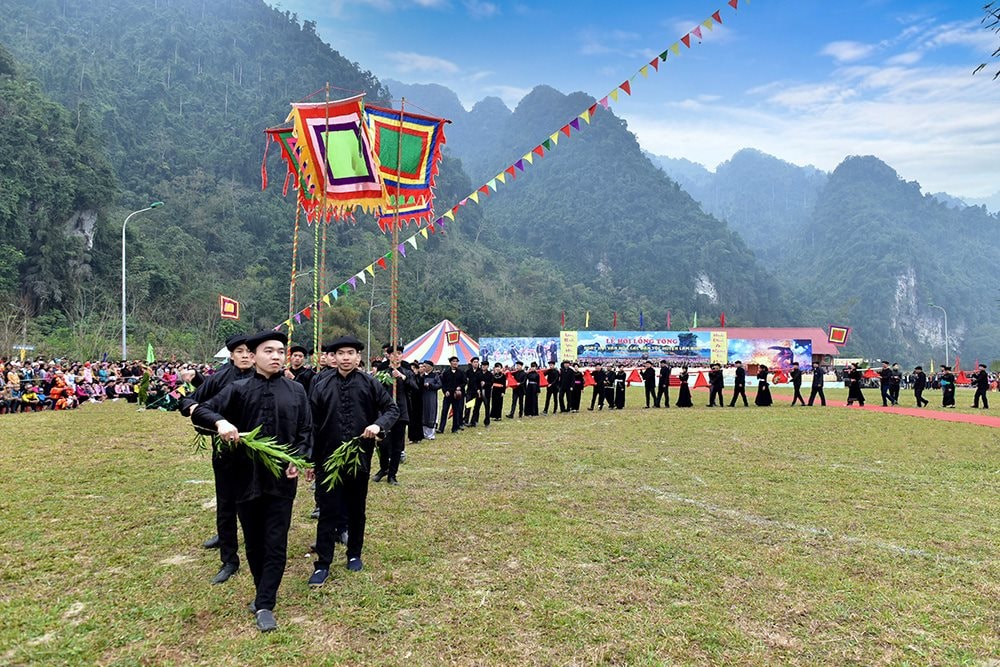
Interspersed with the rituals, artisans, village elders, and local people perform a coordinated display, including 6 traditional dances: dam vii (fan dance), dam dan tinh (stringed instrument dance), dam teo keo (pulling dance), dam dap (sword dance), dam cheo rua (boat rowing dance), and dam quet san rong (dragon yard sweeping dance).
The Festivities of the Long Tong Festival
After the ritual ceremonies, the most eagerly awaited part of the festival begins: the festivities. This part is full of lively and cheerful activities, with thousands of local people and tourists joining in. The festivities of the Long Tong Festival of the Tay people in Kien Thanh include various folk games, such as pigeon fighting, crossbow shooting, tossing con (a type of ball), tug-of-war, and more. One of the highlights of the festival is the rice planting competition, where the fastest and most skilled women from different villages compete by planting rice in a field that has already been plowed the day before.
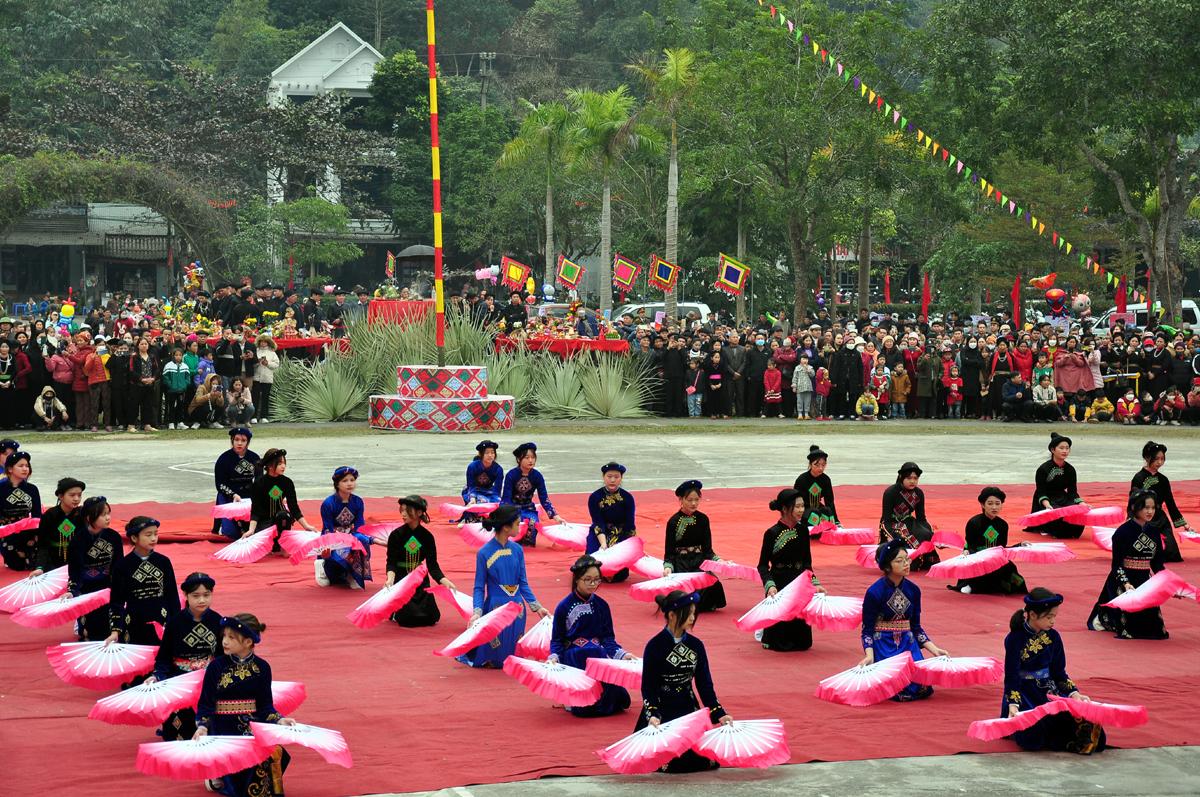
Other games in the festival include: tossing con, tug-of-war, stick fighting, Chinese chess, bird fighting, crossbow shooting, spinning betel nuts, pigeon fighting, marble shooting, and walking on stilts. The swinging game is particularly popular, especially among the youth. These games represent the closeness, simplicity, and communal spirit of the Tay people. These cultural activities have truly become a bridge connecting the Tay, Mong, Dao, and Kinh ethnic groups in the region.
